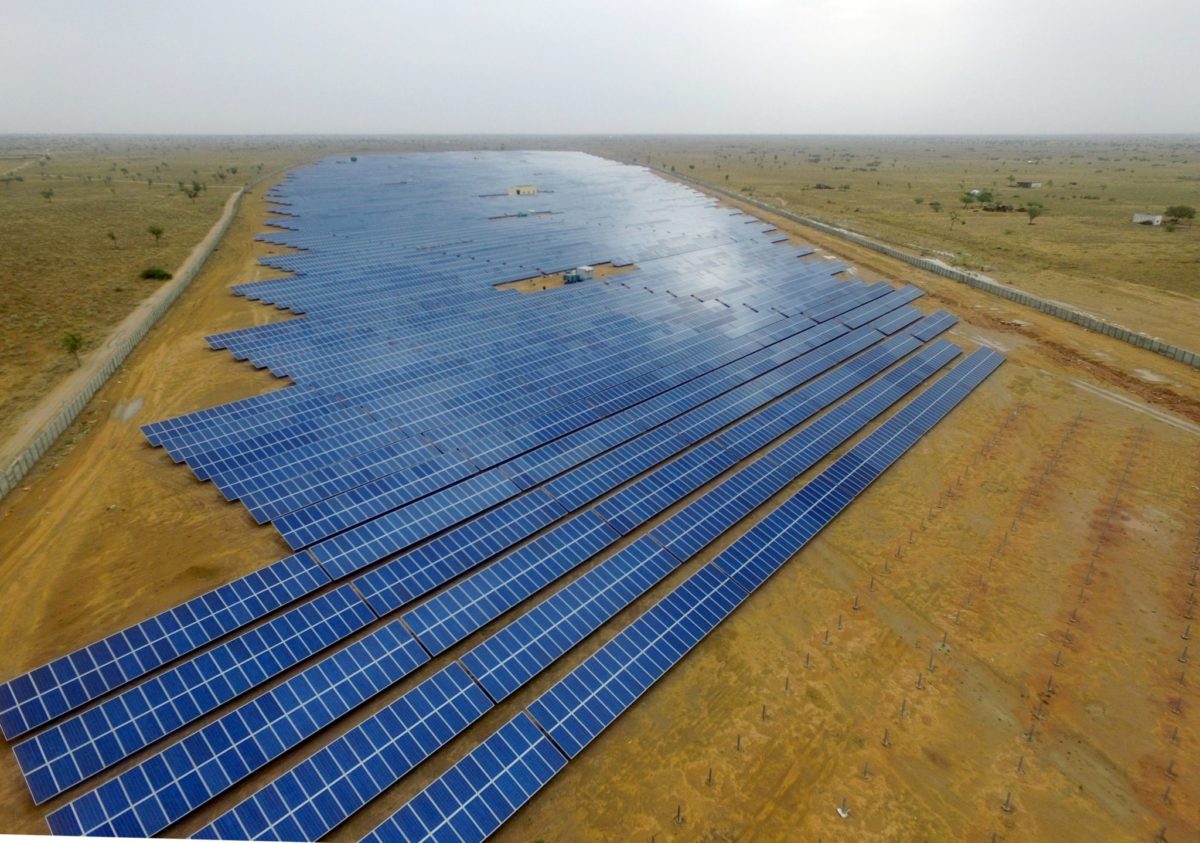A new report by Indian solar market analysts Bridge to India has projected that the country’s solar sector will grow by 9.4 GW in 2017, making it the third-largest solar market in the world behind China and the U.S., overtaking Japan to claim third spot.
However, this 90% year-on-year growth is not without its challenges, the authors of the report stress, notably the headwinds caused by pricing flux and the uncertainty surrounding an anti-dumping probe currently being investigated by Indian authorities.
The report, titled India’s Solar Compass, finds that new capacity additions already began to slow in the second quarter (Q2) of the year following a “bumper Q1” that saw 3,120 MW of utility-scale solar added. In contrast, Q23 saw just 1,437 MW installed out of a scheduled capacity addition total of 3,300 MW.
This shortfall cannot easily be explained because there are many state-level reasons for the slippage. However, common reasons for unfulfilled capacity include transmission-related issues, infrastructural problems and canceled or postponed tenders. According to Bridge to India, of the 3,000 MW of tenders announced at the end of Q2, 2,130 MW of that total were scrapped due to distribution companies (discoms) reconsidering their power procurement options.
But despite these setbacks, as of June 30 India’s cumulative solar PV capacity stood at 15,611 MW, of which 13,951 MW is utility-scale solar and 1,660 MW rooftop solar.
“India’s solar sector continues to grow rapidly with capacity addition in 2017 expected to go up year-on-year by 90%,” said Bridge to India MD Vinay Rustagi. “Rooftop solar is also showing robust growth as solar power becomes increasingly more attractive with falling costs. All this is acting as a huge pull for international investors and equipment suppliers. The challenge is to sustain this growth as discoms seem to be frozen in the headlights with falling tariffs and weak power demand.”
Bridge to India notes that in Q2 India’s solar sector saw its tariffs break the INR 3.00/kWh threshold (hitting INR 2.44/kWh at the Bhadla Solar Park auction) – a “critical” moment for power prices, the analysts say, because it means solar is now India’s cheapest new source of power.
“The overriding need of the moment is for central government and regulators to ensure that the tender allocation and project contractual structures are robust and not prone to short-term fluctuations,” Rustagi added.
Future growth, future challenges
The Bridge to India report forecasts Q3 and Q4 growth to be 1,565 MW and 2,265 MW respectively, with rooftop capacity to account for 1,056 MW of the year’s annual installation figure.
These figures are contingent on the emergence and continuation of certain market trends that the analysts have identified. These include a Q2 module price spike of $0.32-$0.33/Qp against expectations of $0.28/Wp. This is due to an uptick in module demand in the U.S. and China.
India is also expected to transition fully to 1,500 VDC power systems over the next two years, while solar trackers are starting to become a must-have for utility-scale developers: Bridge to India expects tracker-controlled installations to grow from 450 MW in Q2 to 800 MW in Q3, but warns that falling module prices may limit tracker adoption in the future as developers feel less financial pressure to squeeze as much power from their investments as previously.
Other trends are a softening of debt conditions greasing the wheels of investment; an upsurge in M&A activity, and an anticipated withdrawal of all incentives and support mechanisms for solar and wind power over time.
In the nearer-term, uncertainty brought about by the anti-dumping probe against Chinese, Malaysian and Taiwanese solar components could slow installations. “It is still an unnerving time for project developers and investors as rising competition forces tariffs down,” the report concludes.
This content is protected by copyright and may not be reused. If you want to cooperate with us and would like to reuse some of our content, please contact: editors@pv-magazine.com.








By submitting this form you agree to pv magazine using your data for the purposes of publishing your comment.
Your personal data will only be disclosed or otherwise transmitted to third parties for the purposes of spam filtering or if this is necessary for technical maintenance of the website. Any other transfer to third parties will not take place unless this is justified on the basis of applicable data protection regulations or if pv magazine is legally obliged to do so.
You may revoke this consent at any time with effect for the future, in which case your personal data will be deleted immediately. Otherwise, your data will be deleted if pv magazine has processed your request or the purpose of data storage is fulfilled.
Further information on data privacy can be found in our Data Protection Policy.